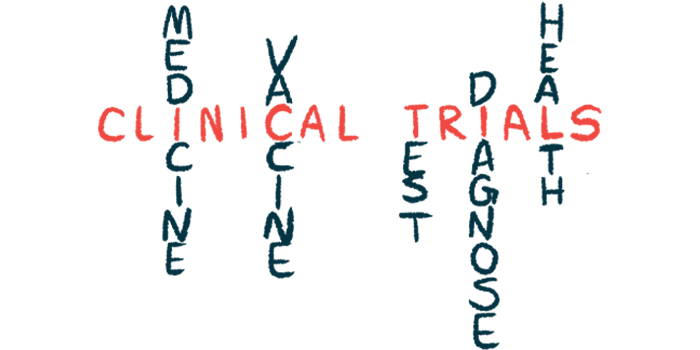Study Supports MS Disability Test Score as Outcome Measure in Trials
Assessment combines scores from the EDSS, T25FW, and the 9-hole peg test
Written by |

The Overall Disability Response Score, a combination of three different assessments of disability, could be used to more accurately evaluate the effectiveness of treatments in multiple sclerosis (MS) clinical trials, a new study illustrates.
The score is composed of three measures commonly used to assess disability in MS, which evaluate hand dexterity, walking ability, and overall disability.
The study, “Overall Disability Response Score: An integrated endpoint to assess disability improvement and worsening over time in patients with multiple sclerosis,” was published in Multiple Sclerosis Journal. The work was funded by Biogen.
Clinical trials are the gold standard for assessing whether a potential treatment for MS is effective. A challenge in designing MS trials is finding ways to quantify the extent that disease symptoms cause impairment in daily life — in other words, measuring disability.
A common tool to assess MS disability is the Expanded Disability Status Scale (EDSS), which measures it on a scale from 1 to 10 with higher numbers suggesting worse impairment. This tool has notable drawbacks, however.
“Although the Expanded Disability Status Scale (EDSS) is a widely used disability measurement in MS trials, it does not adequately measure walking speed, upper limb, or cognitive function, which are frequently compromised in patients,” the researchers wrote.
They noted too that EDSS ratings tend to vary depending on who is doing the scoring, especially with lower scores because higher EDSS scores “are mainly determined by maximal walking distance and do not sufficiently reflect other neurological impairments.”
Combining MS disability scores
The Overall Disability Response Score, or ODRS, is a composite assessment that combines EDSS scores with two other common disability measures, the timed 25-foot walk (T25FW) and the 9-hole peg test (9HPT).
The T25FW is a straightforward assessment of walking ability. The 9HPT tests hand dexterity wherein a patient is timed on how long it takes to place pegs into holes in a board.
“ODRS is a composite endpoint that quantifies longitudinally both clinically relevant disability improvement and worsening from baseline in EDSS, T25FW,” and 9HPT on each hand, the researchers wrote.
The ODRS is calculated by determining whether a patient has improved or worsened on each measure. Scores could range from -4, meaning all measures had worsened, to +4, meaning all had improved.
To assess ODRS’s utility as an outcome measure in clinical trials, scientists calculated scores using data from two previously completed Phase 3 clinical trials, AFFIRM (NCT00027300) and ASCEND (NCT01416181). Both evaluated Tysabri (natalizumab), which is approved in the U.S. for relapsing types of MS.
AFFIRM enrolled participants with relapsing MS who were given Tysabri or a placebo and results showed it could reduce the risk of disability progression as measured by EDSS.
ASCEND tested Tysabri against a placebo in people with secondary progressive MS (SPMS). It was terminated after results showed the treatment failed to reduce the risk of disability progression as measured with a combined assessment of EDSS, 9HPT, and T25FW.
Comparing outcomes
The researchers compared ODRS outcomes over 96 weeks (about two years) between Tysabri and a placebo. In both studies, the average score was significantly higher for patients on Tysabri than on a placebo — a difference of 0.34 points in AFFIRM and 0.18 points in ASCEND.
Other analyses comparing ODRS outcomes at 96 weeks or comparing score changes over time also showed a statistically significant difference favoring Tysabri over a placebo in both trials.
“The results obtained in the AFFIRM data set … are consistent with the primary AFFIRM outcome showing the reduction in the cumulative probability of 12-week confirmed worsening on EDSS in [Tysabri] group versus placebo,” the researchers wrote.
Although the ODRS analysis indicated disability worsening was slower for SPMS patients on Tysabri than a placebo in ASCEND, the researchers emphasized that the analysis was post hoc, meaning it was designed and carried out after the trial had already been completed and all data was collected.
“This analysis was post hoc in nature and would not change the conclusion that ASCEND trial was negative; there is no conclusive evidence to demonstrate the benefit of [Tysabri] treatment in SPMS patients,” they wrote.
ODRS values showed small but statistically significant correlations with standardized measures of life quality and self-perception of the impact of MS. This finding “suggests that improvement and worsening on ODRS are directionally related with changes in quality of life,” the research team wrote. “The ODRS in this post hoc analysis of two large Phase 3 datasets sensitively captured the trajectory of disability changes in typical RRMS and SPMS patient populations.”
A noted limitation of the ODRS is that it only assesses physical disability.
“Ideally, cognitive and visual functional domains would be included in a disability outcome measure for MS,” the researchers wrote, pointing out an opportunity to see whether adding other assessments to the ODRS could improve its sensitivity.






